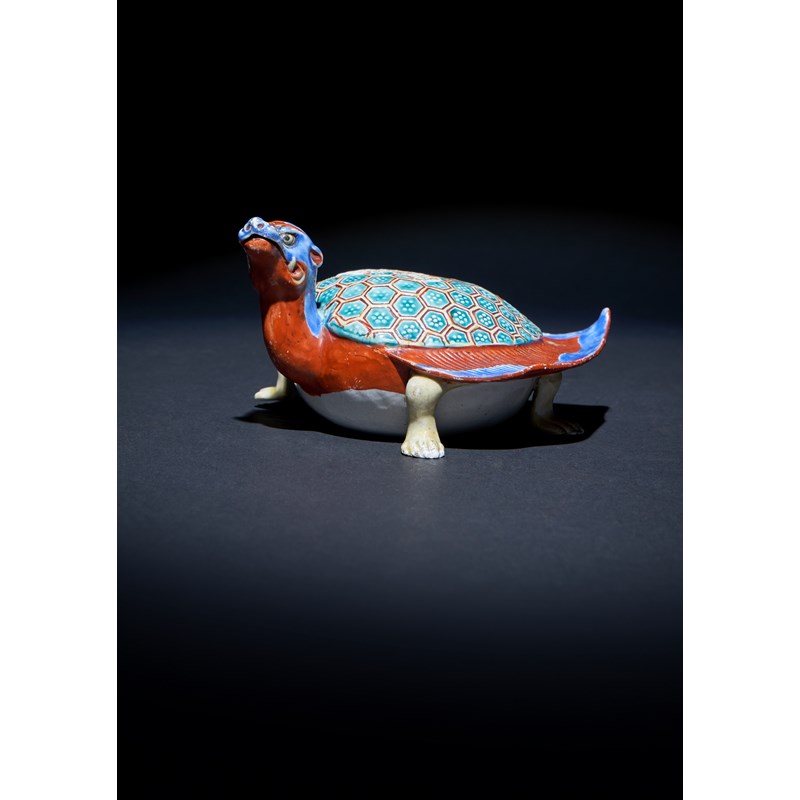Japanese Works of Art - 07 Dec 2020
A RARE JAPANESE KAKIEMON MODEL OF A 'FLAMING TORTOISE'
A RARE JAPANESE KAKIEMON MODEL OF A 'FLAMING TORTOISE', MINOGAME
EDO PERIOD, C.1660-80
The mythical creature decorated in turquoise, cerulean, iron-red, yellow and black, its carapace with a moulded honeycomb pattern and a trailing veil of seaweeds underneath the rim, with five-toed feet and baring its fangs, 18.5cm.
Cf. G Lang, The Wrestling Boys, An exhibition of Chinese and Japanese ceramics from the 16th to the 18th century in the collection at Burghley House, p.36 no.93 for a related model of a minogame and Immortal. Also,J Ayers, & O Impey, Porcelain for Palaces: The Fashion for Japan in Europe 1650-1750, p.177, no.158 for a discussion on the example at Burghley House.
See Christie's London, 11th May 2011, lot 104 for another related model, formerly in the collection of The Earls of Lauderdale. Also, Christie's London, Courtly Display: the Somlyo Collection of Japanese ceramics, London exhibition 12th-19th December 2015, pp.22-23 no.1, for a discussion on the same piece.
Only four other similar models are known: the collection at Burghley House, Lincolnshire, includes one; another can be found in the Kassel Collection in Germany; a third is in a private collection in Japan, and the fourth was formerly owned by The Earls of Lauderdale. The Gardiner Museum in Toronto, Canada, has another example of an early Kakiemon turtle with a slightly different design; the colour scheme is different, and the beast has a shorter neck. A mould used for the hexagonal carapace was excavated in Arita and is now at the Arita Ceramic Museum.
The archives of the VOC (Vereenigde Oostindische Compagnie) Dutch East India Company mention "295 small statuettes on tortoises" imported in 1665 on board the Nieuwenhoven. Minogame are a symbol of immortality and the long weeds trailing under their carapaces also convey this idea of longevity. They were misinterpretated as flames when they first arrived in the West however, hence the name 'flaming tortoise'. The immortal turtle became a popular design used on European Kakiemon-style pieces in the 18th century.




 Live online bidding is available via our own
Live online bidding is available via our own